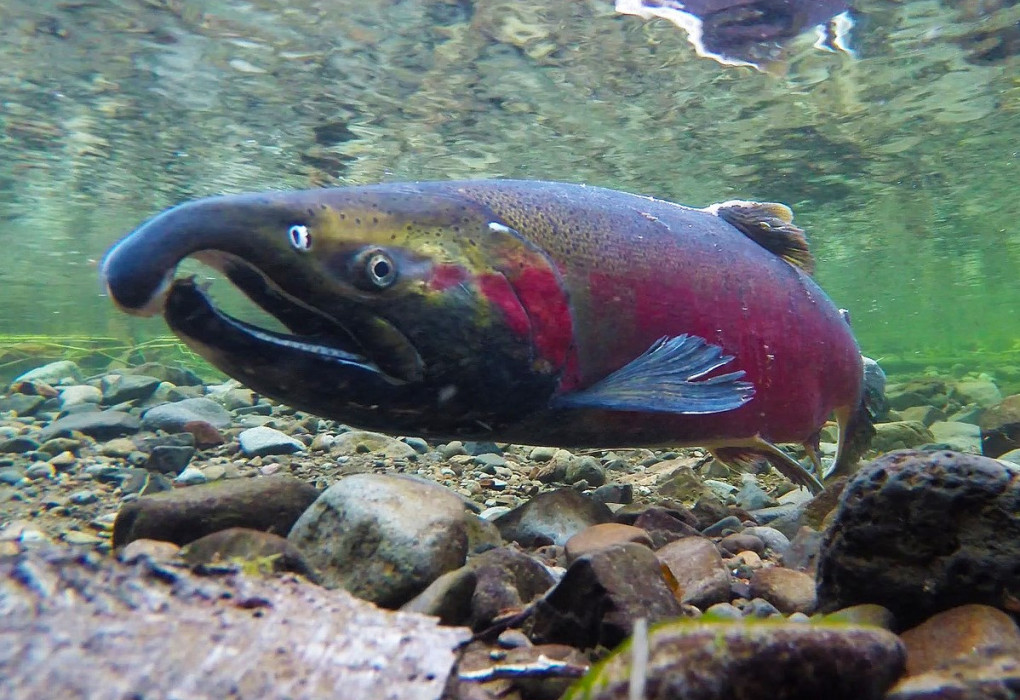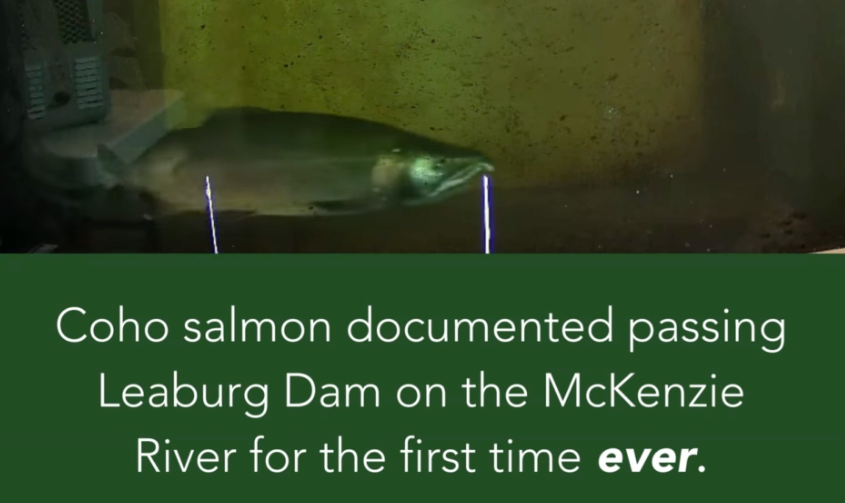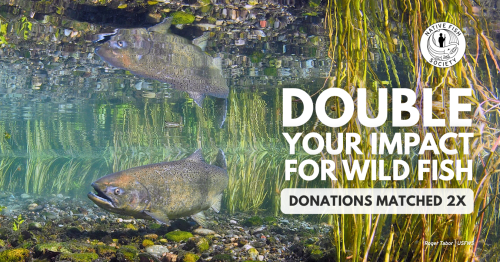Victory or Illusion: the Case of the Upper Willamette Coho
There has been one remarkably bright spot for anadromous salmonids in the upper Willamette River (UWR) this year–a record return of Coho. But is this an example of wild abundance or yet another instance of human interference?
Are Coho Native to the Upper Willamette?
Historically, the ~40’ high Willamette Falls served as a barrier to Coho migration. As the area around the Falls was industrialized, a fish ladder was installed, the earliest version of which was built in 1885. But Coho weren’t using the ladder to move above the Falls in noticeable numbers, likely at least partly because of the high levels of pollutants released by early industry.
Hatchery stocking of UWR Coho began in the late 1950s and continued through the 1980s, though the very last stocking took place in 1996 in the Tualatin River. The source populations for these stocking programs were a combination of fish from 13 regional hatcheries and a number of other regional sources, consisting of both lower Columbia and Coastal Coho.
The hatchery programs were never successful at producing very large adult returns (generally <3,000), so it was surprising when Coho in the UWR started returning in substantial numbers in the early 2000s, years after stocking ended. This year, a record 40,000 Coho returned to the UWR. Without constant stocking efforts, the hatchery fish went through a period of strong natural selection, especially considering the poor ocean conditions during this time. Only the few hatchery fish that had better genetics were able to survive and reproduce. It’s likely that at least some straying from the nearby native Clackamas run helped bolster the UWR Coho.
Another interesting fact: in the mid-1970s to 1990, the number of jacks passing the Falls was almost equivalent to the number of adults, whereas the relative proportion of jacks has fallen off steeply since Coho numbers started increasing in the 2000s. Jacks are generally more frequent in hatchery programs; a result of the fast growth rates selected for in hatchery environments. Seeing fewer jacks relative to 3-year-olds is another indication the UWR Coho have naturalized to their environment.
Why are Coho Doing Well When Other Species Aren’t?
Both spring Chinook and steelhead are particularly vulnerable to climate change. Chinook, being the largest-bodied anadromous salmonid, require much more prey in warmer ocean conditions. Adult spring Chinook also face increasingly scarce freshwater summer habitat cool enough to allow them to survive until they spawn in the fall. Steelhead are likewise strongly affected by warm ocean conditions, as they are the most surface-oriented of all salmonids and tend to swim in areas of the open ocean where marine heatwaves can be most severe.
On the other hand, Coho are smaller-bodied and so are less negatively affected by warming ocean temperatures than Chinook. They are also quite flexible in their use of freshwater habitats and can take advantage of swiftwater tributaries associated with steelhead, as well as lower gradient slack waters.
What Does This Mean for Chinook and Steelhead?
The two anadromous salmonids that are definitively native to the UWR–spring Chinook and winter steelhead–are both listed as threatened under the Endangered Species Act (ESA). So how might these large returns of Coho affect Chinook and steelhead, and how should we manage coho to protect those threatened species?
Unfortunately, we don’t yet know much about how Coho might be interacting with Chinook and steelhead. All three species coexist in many watersheds throughout Oregon and use slightly different habitats. However, there is the potential for Coho to compete with Chinook and steelhead, particularly in the juvenile stage. Many UWR tributaries have seen large increases in temperature in the past 10-15 years, and so space in thermal refugia in those rivers are at a premium. A recent survey conducted in the Molalla River found that thermal refugia were dominated by Coho. It’s not clear if the Coho are outcompeting Chinook and steelhead for positions in cold water habitat, or if there are just more Coho present, but this could be a substantial negative effect if it’s due to competition.
That being said, ample Coho returning to UWR tributaries will result in more salmon carcasses present to support the river and riparian ecosystem in those rivers. Coho eggs and carcasses could support juvenile Chinook and steelhead by providing an additional food source.
Fisheries biologists at the Oregon Department of Fish and Wildlife are already planning on conducting studies to determine the effects of Coho on the Chinook and steelhead of the UWR. We’ll keep you updated as we learn more. In the meantime, consider participating in a "guilt-free" fishery targeting UWR Coho next fall, as a strong return of jacks this year indicates a robust run for the upcoming year.
For Reference:
Oregon Department of Fish and Wildlife Facebook post - December 14, 2023


